If you’re new to DIY gadgets, start with fun projects like a hand crank generator or bike-powered blender to convert simple energy sources into usable energy. Try an easy LED circuit light to learn basic electronics, or build Arduino smart devices for engaging tech. For something cool and safe, a mini Tesla coil’s perfect. You can also create smart home automation or a DIY alarm system to mix convenience and security. Each project builds practical skills while sparking creativity—and there’s more exciting stuff ahead to investigate!
Key Takeaways
- Start with simple energy projects like hand crank generators or bike-powered blenders to learn mechanical-to-electrical energy conversion.
- Explore Raspberry Pi projects such as media centers, weather stations, or retro game consoles for beginner-friendly tech builds.
- Build wireless phone chargers or DIY wireless charging circuits to understand electromagnetic induction and wireless power transfer.
- Create fun gadgets like electronic dice, thermal cameras, or mini Tesla coils to engage with electronics and programming basics.
- Join online communities and tutorials for support, fostering creativity, hands-on learning, and collaboration in DIY tech projects.
Hand Crank Generator

If you’ve ever wondered how to turn your own muscle strength into electricity, building a hand crank generator is a fantastic place to start.
When you crank the handle, you’re using mechanical energy that’s cleverly converted into electrical energy through a simple motor and voltage regulator setup.
It’s more than just a cool gadget—it’s a hands-on way to grasp electrical conversion and electromagnetism.
Plus, it’s perfect for emergencies or off-grid adventures, since you won’t need batteries or plugs.
Best of all, the parts are affordable and easy to find, making this a welcoming project for anyone enthusiastic to learn.
Bike Powered Blender
One of the coolest ways to blend your favorite smoothies while getting some exercise is by building a bike-powered blender.
I love how it turns pedaling into sustainable energy, blending ingredients without using electricity. To start, grab an old bike and attach your blender using a belt or pulley system connected to the pedals.
This setup not only makes blending a workout—talk about fitness fun—but also teaches you about energy conversion in a hands-on way.
Plus, sharing this project with friends builds a sense of community around eco-friendly living and active lifestyles.
Give it a try!
Low Tech Water Filter

Building a low-tech water filter is a fantastic way to turn simple materials like sand, gravel, and activated charcoal into a potent tool for cleaning water.
When you layer these filter material choices in a container, water purification methods rely on gravity to pull water through each layer, trapping sediments and reducing some bacteria and chlorine.
It’s a smart, cost-effective project perfect for camping or emergencies. Plus, it teaches us about environmental science and clean water’s importance.
If you’re looking to join a community that values practical skills, this DIY filter is a great place to start.
LED Circuit Light
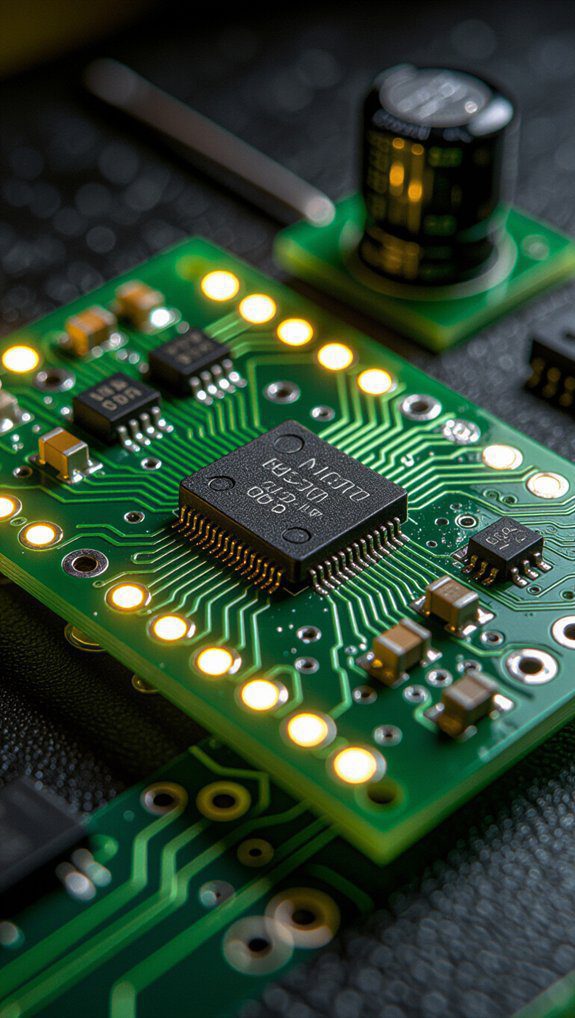
An LED circuit light is a fantastic way to get hands-on with basic electronics, and it’s easier than you might think to put together.
By exploring circuit design basics, you’ll build a simple setup using LEDs, a battery, resistors, and wires. One exciting part is LED brightness control—you can adjust light levels by changing the resistor values.
Here’s what you’ll need:
- Breadboard or circuit board
- LEDs of your choice
- Energy source like batteries
- Connecting wires and resistors
This project welcomes you into the DIY electronics community with confidence and creativity!
Arduino Smart Devices
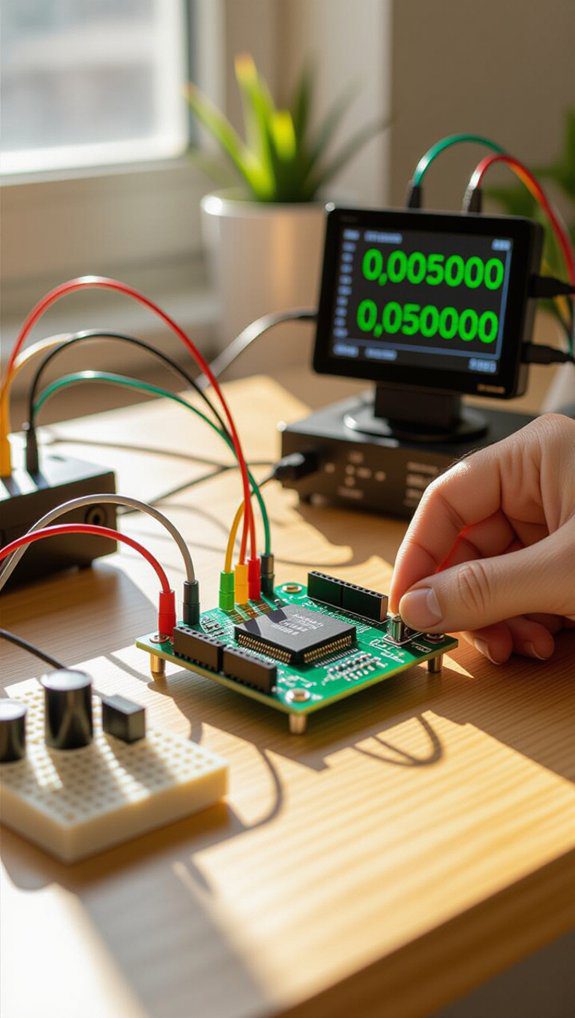
Although starting with electronics might seem tricky, diving into Arduino smart devices opens up a world of possibilities that’s both fun and surprisingly approachable. Using Arduino sensors and Bluetooth modules, you can create engaging projects like a smart plant or a touchless dispenser. Beginner kits make hardware assembly and coding tutorials easy to follow, while online communities help with project troubleshooting. Plus, IoT integration lets your devices communicate over the internet, broadening your creative reach. Here’s a quick overview:
| Project Type | Key Components | Skill Level |
|---|---|---|
| Smart Plant | Arduino sensors | Beginner |
| Touchless Dispenser | Bluetooth modules | Beginner-Intermediate |
| IoT Devices | IoT integration | Intermediate |
Raspberry Pi Projects

When you start working with a Raspberry Pi, you’ll quickly uncover just how much you can do with this tiny but potent microcomputer.
From Raspberry Pi automation to Raspberry Pi gaming, it’s a playground for creativity. I love how Raspberry Pi sensors and robotics open doors to hands-on learning and fun.
Here are some projects to get you started:
- Build a Raspberry Pi media center to stream your favorite shows.
- Create a Raspberry Pi weather station for real-time local updates.
- Set up Raspberry Pi home security for peace of mind.
- Investigate Raspberry Pi data logging to track and analyze information.
Join this vibrant community and make tech yours!
Wireless Phone Charger
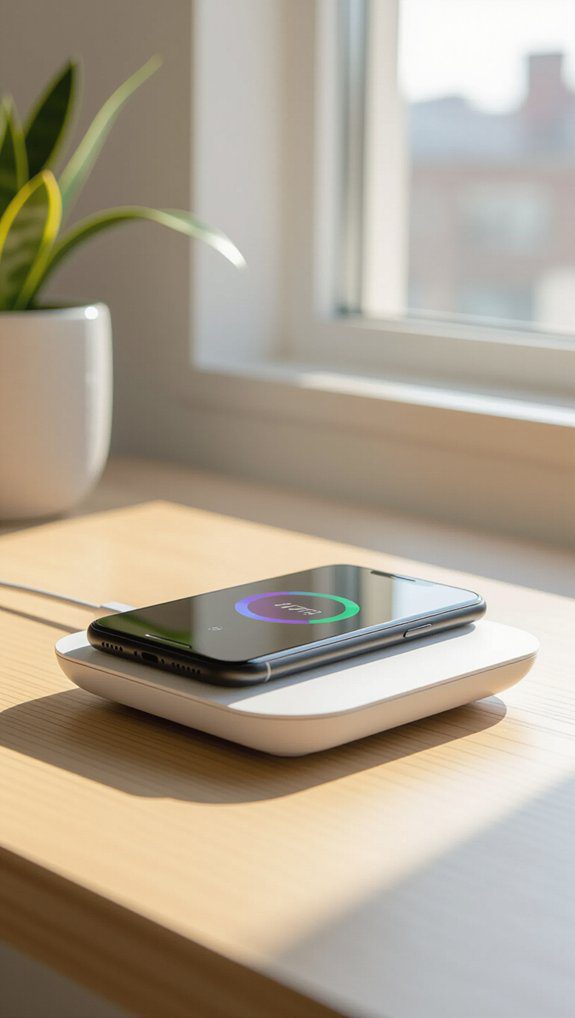
Wireless phone chargers have become a game-changer for anyone tired of tangled cords and hunting for outlets.
I love how the wireless charging benefits include convenience and less wear on charging ports. Using electromagnetic induction, these chargers transfer energy without cables, which feels almost magical!
When you compare charging speed, wireless chargers usually range from 5W to 15W, so faster options can charge your phone almost as quickly as wired ones.
If you’re up for a DIY project, building your own with a Qi module and an energy source is doable—and it’s a great way to join the wireless charging community!
DIY Thermal Camera

If you enjoyed putting together your own wireless charger, you’re going to love building a DIY thermal camera next.
Using a Raspberry Pi and a thermal sensor like the AMG8833, you can investigate thermal imaging applications that reveal heat patterns invisible to the naked eye.
Raspberry Pi programming helps you process and display these images, making the project both fun and educational.
Here’s what you’ll need to get started:
- Raspberry Pi and AMG8833 sensor
- Basic Python programming skills
- Open-source software for image processing
- Optional Wi-Fi module for remote viewing
Together, we’ll reveal the heat around us!
Electronic Dice Toy

Although it might seem simple at first, building an electronic dice toy is a fantastic way to immerse yourself in the world of microcontrollers and coding while creating something fun and engaging.
Using an Arduino or Raspberry Pi, you can generate electronic randomness to simulate dice rolls, displaying results with bright LEDs.
This engaging gaming device not only makes rolling dice exciting but also helps you learn programming and circuit design basics.
Plus, you can customize sound effects or dice types, making it perfect for various games.
Beginners will love how approachable and rewarding this project truly is.
Multifunctional Scale

When you think about a scale, you probably picture a simple device for measuring weight, but a multifunctional scale takes things to a whole new level by blending several useful features into one compact gadget.
It’s perfect for anyone wanting easy weight tracking and health metrics at home. Here’s why I love it:
- Measures weight with precision, sometimes down to 0.1 grams
- Tracks body fat and other health indicators
- Syncs data via Bluetooth to smartphone apps
- Supports multiple user profiles for personalized tracking
This smart tool makes monitoring your health both simple and motivating.
Component Tester Kit
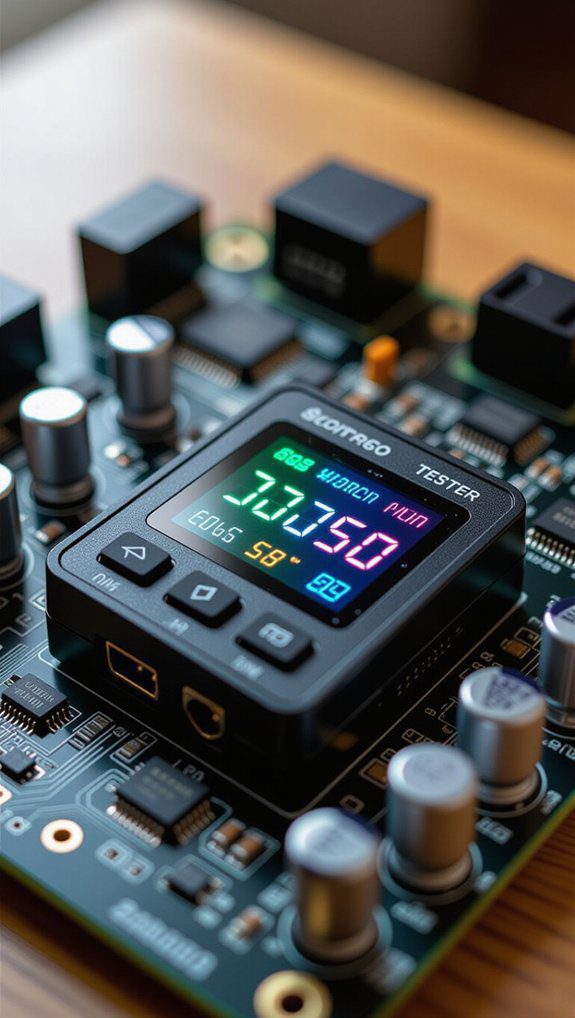
Since diving into electronics can feel a bit overwhelming at first, a component tester kit quickly becomes your best friend by making it easy to check if parts like resistors, capacitors, diodes, and transistors are working properly.
This handy tool uses clear component testing techniques that boost your beginner electronics skills while showing you real values on an LCD display.
Portable and user-friendly, it lets you practice identifying parts and diagnosing issues wherever you are.
Trust me, investing in one turns those confusing circuits into friendly puzzles, helping you feel confident as you build your tech know-how step by step.
Cardboard Robot

After getting comfortable with testing electronic parts, you might be excited to bring those components to life in a fun, hands-on way. Building a cardboard robot is a perfect next step.
It’s a chance to investigate movement mechanics while experimenting with design variations that fit your style. Here’s what makes it special:
- Uses simple materials like cardboard and motors
- Teaches basic robotics and circuit connections
- Encourages creativity and problem-solving
- Great for teamwork and sharing ideas
With online tutorials and friendly forums, you’re never alone in this creative expedition.
Let’s build something amazing together!
Power Bank Builder
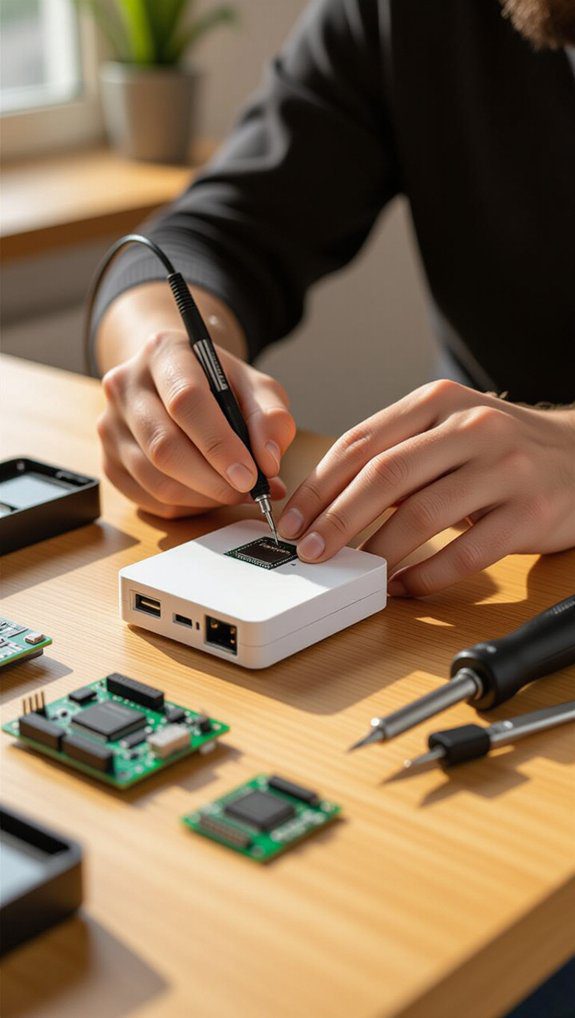
Building your own energy bank is a rewarding project that combines practical skills with useful results, giving you a portable charger you can trust.
I started with popular battery types like the 18650 lithium-ion cell, known for its reliable capacity and voltage. Adding a proper USB charging circuit with a voltage regulator guarantees my devices charge safely at 5V.
Don’t forget a battery management system—it protects against overcharging and keeps everything balanced.
With simple parts and clear guides, anyone can build their own energy bank. It’s a great way to learn and carry electricity wherever you go!
Retro Game Console

A retro game console brings a fun blast from the past right into your hands, and you can create one yourself using a Raspberry Pi.
I love how RetroPie, a popular emulation software, lets you play classic games with ease.
To get started, you’ll need:
- Raspberry Pi board and microSD card
- USB game controllers for authentic play
- Custom cases to personalize your setup
- HDMI output for crisp, nostalgic gameplay
Mini Tesla Coil
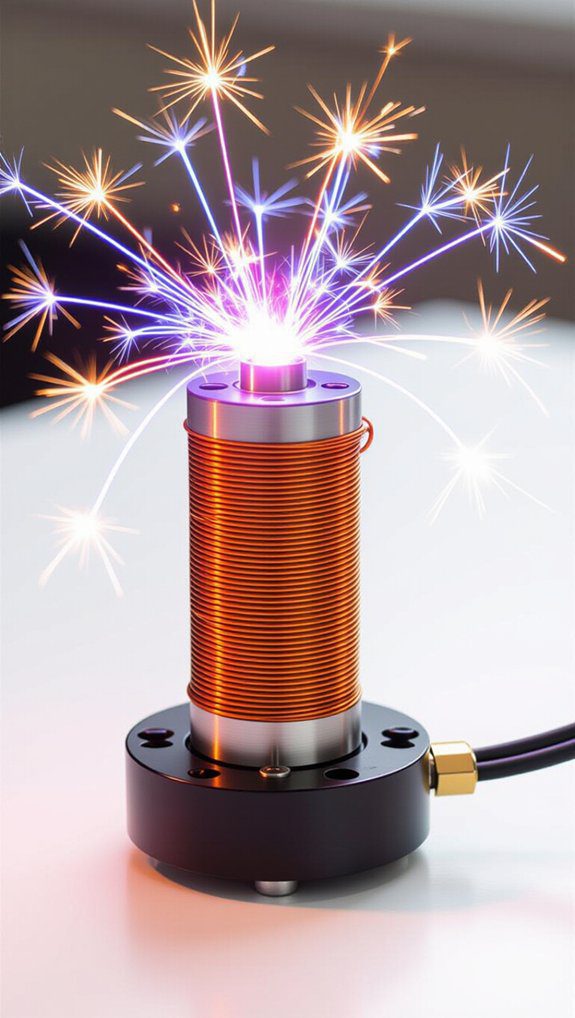
Exploring the world of electricity gets exciting when you plunge into making a mini Tesla coil, a small but potent device that creates spectacular electrical sparks and high-frequency currents. This project teaches electromagnetic induction and demands careful attention to high voltage safety. Using copper wire and PVC pipes, you’ll craft coils that resonate to produce dazzling sparks. Here’s a quick look:
| Component | Purpose | Safety Tip |
|---|---|---|
| Primary Coil | Creates magnetic field | Insulate wires carefully |
| Secondary Coil | Amplifies voltage | Keep clear of sparks |
| Spark Gap | Produces sparks | Use protective gear |
Join me, and let’s spark curiosity safely!
Hourglass LED Timer

Timers that light up in colorful patterns can make tracking time much more fun and visually exciting. Building an hourglass LED timer lets you see time flow through glowing, changing lights—just like sand dropping in a real hourglass.
I love how LED color customization lets me personalize every countdown, making each session unique. Plus, learning timer programming techniques is a rewarding challenge that sharpens coding skills.
Here’s what you’ll investigate:
- Basic circuit design with Arduino or microcontroller
- Programming countdown intervals
- Customizing LED colors and sequences
- Using the timer for cooking, studying, or gaming
It’s a perfect project for beginners wanting hands-on fun and learning!
Smart Home Automation
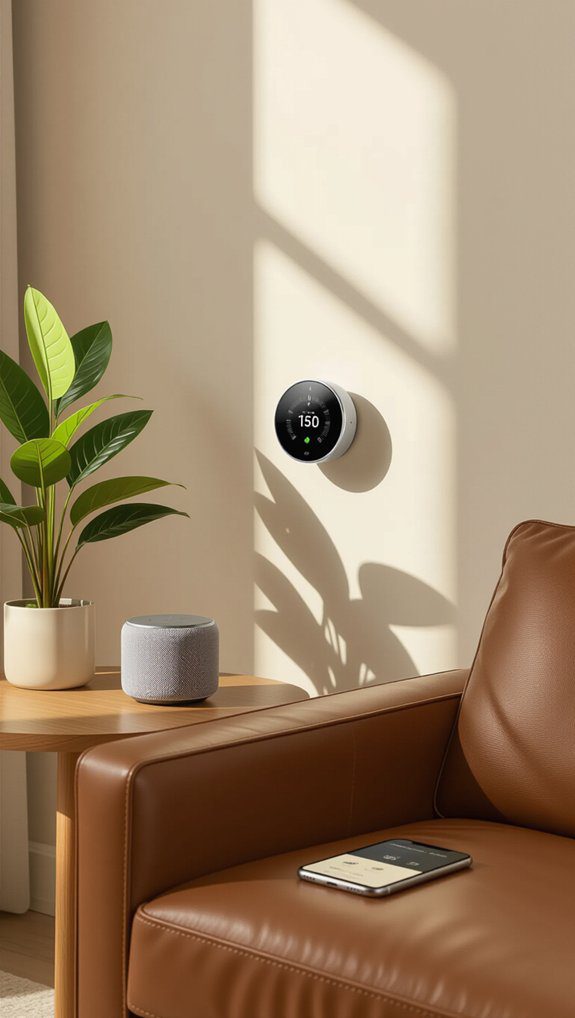
When you start connecting everyday devices to your phone or voice assistant, you’ll quickly see how smart home automation can transform your living space into something truly convenient and efficient. I love how smart thermostat integration and voice assistant setup make controlling temperature and lighting with just a command or tap easier. Here’s a quick guide to get you started:
| Device | Function | DIY Tip |
|---|---|---|
| Smart Thermostat | Temperature control | Use voice assistant setup |
| Smart Bulbs | Lighting automation | Sync with phone app |
| Smart Plant Monitor | Plant health alerts | Connect sensors to Wi-Fi |
| Touchless Sanitizer | Hygiene improvement | Use motion sensors |
These projects build skills and create a cozy, smart home you’ll enjoy!
DIY Alarm System
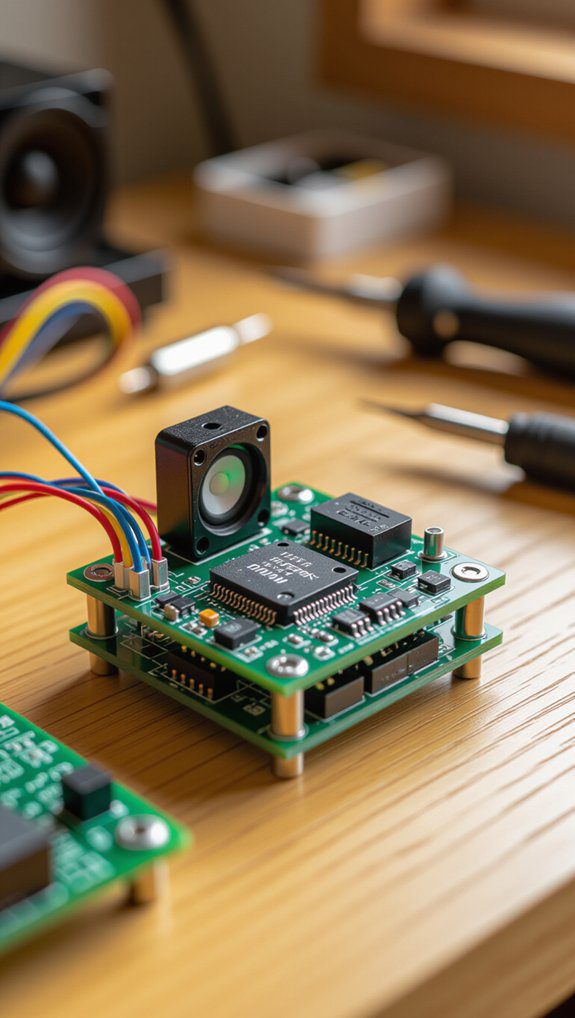
Although setting up a security system might sound complicated, building your own DIY alarm system can be surprisingly straightforward and fun. Using budget solutions like Arduino or Raspberry Pi with DIY components, you can create a system featuring motion detection and custom alarms.
Adding a GSM module enables alarm notifications via remote access. Here’s what to focus on:
- Basic programming basics for smooth user interface
- Integrating a keypad for easy arming/disarming
- Combining security features with system integration
- Exploring online tutorials for step-by-step guidance
You’ll join a welcoming community enthusiastic to help you protect what matters!










